Roofing Materials
Understanding Roofing Materials in NZ
Metal roofs are a popular choice for both residential and commercial properties due to their exceptional durability, longevity, and aesthetic versatility. Unlike traditional tile or shingle roofs, long-run metal roofing features continuous sheets of metal. This design significantly reduces the risk of leaks and offers superior weather resistance. Metal sheet roofs come in various “profiles” or designs, each with its distinctive look.
At Solution Roofing, we are experts at helping you pick the right profile to ensure optimal performance, aesthetic appeal, and cost-effectiveness for your specific project. Let’s walk through the most common profiles, their unique characteristics, and their ideal applications.
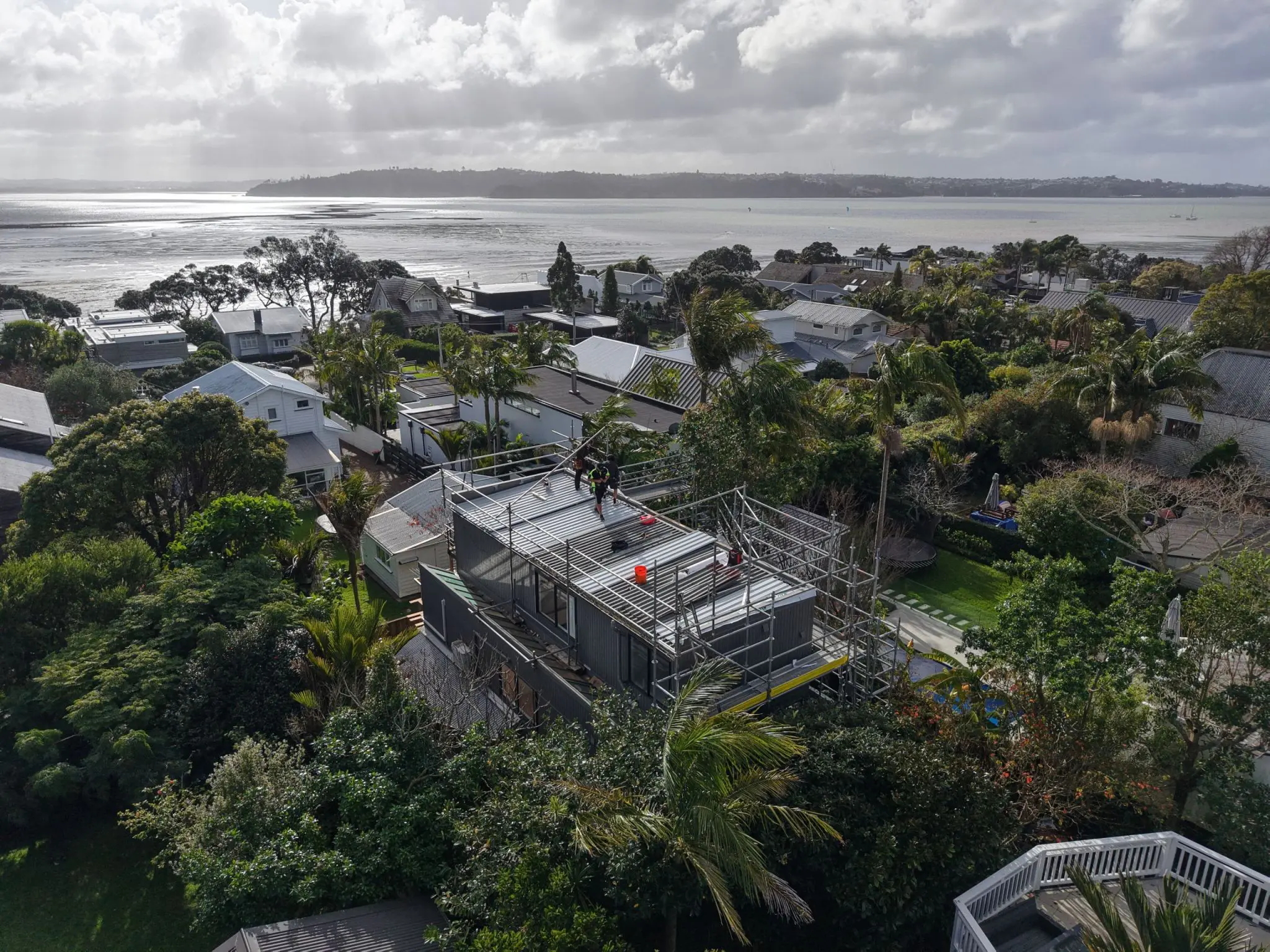
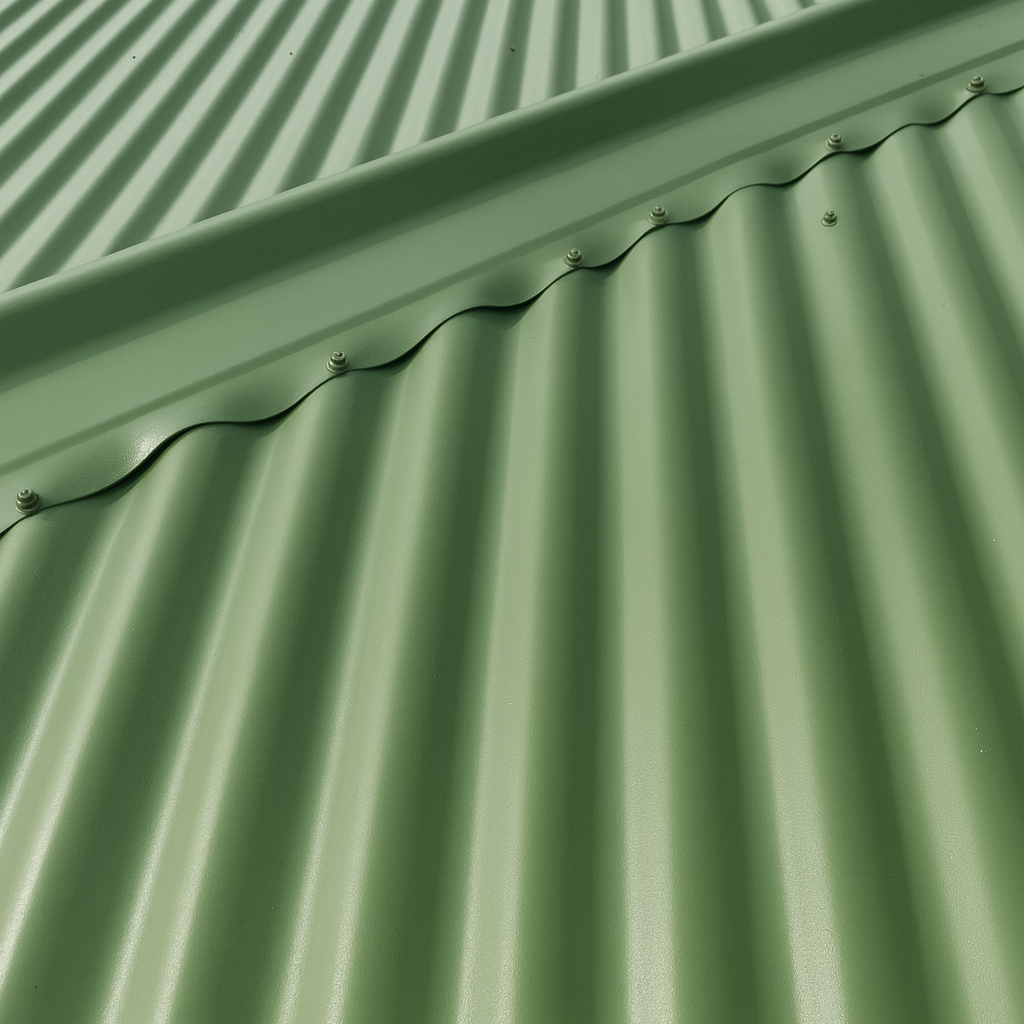
Corrugated Profile
Perhaps the most iconic and widely recognised roofing style, characterised by its distinctive wavy and timeless appearance. This classic design suits all homes.
Key Features
- Traditional and timeless aesthetic.
- Heavy-duty due to the corrugations.
- Excellent water shedding capabilities.
- Cost-effective and easy to install.
Typical installations
Residential
-
Classic homes and villas, rural properties, sheds, and carports.
Renovations
-
Maintaining a traditional look.

Trapezoidal Profile
Also known as Trimrib, MC760 and TRS5, this profile offers a modern, clean, and strong appearance. It features a series of subtle ribs and wide, flat pans, providing excellent spanning capabilities and superior drainage compared to corrugated profiles on flatter pitches.
Key Features
- Contemporary architectural look.
- Strong spanning capabilities reduce the need for extensive purlins.
- Effective water drainage, suitable for lower-pitched roofs.
Typical installations
Residential
-
Modern homes, extensions, pergolas, and carports.
Commercial/Industrial
-
Commercial buildings, schools, offices, large industrial structures with low-pitch roofs.
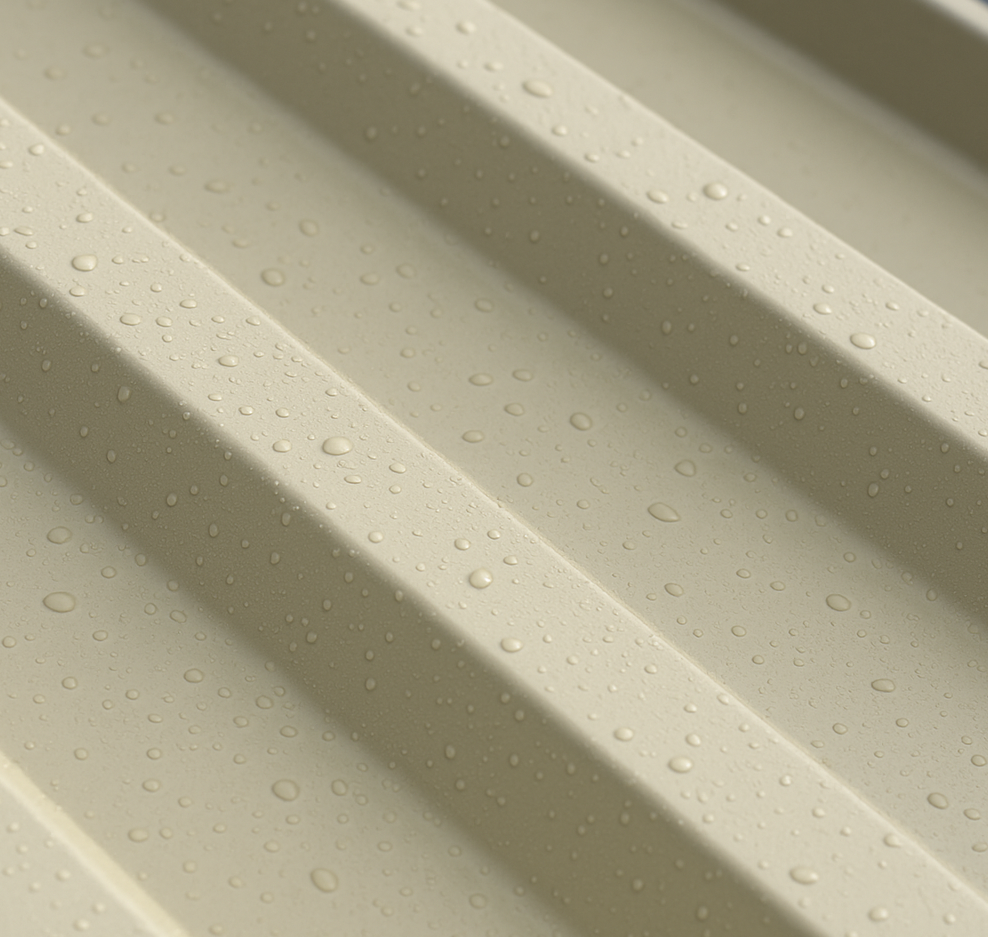
Trough Profile
A versatile profile featuring wide flat pans with prominent ribs. Trough profiles balance a clean, modern appearance with excellent water-carrying capacity, making them suitable for both residential and commercial roofing applications.
Key Features
- Wide, flat pans separated by high ribs.
- Strong water-shedding capabilities, especially at lower pitches.
- Concealed fixing options for a streamlined look.
- Simple, functional, and cost-effective.
Typical installations
Residential
-
Contemporary homes, garages, carports.
Commercial/Industrial
-
Warehouses, retail spaces, large-span structures.
Architectural
-
Where a flat, understated aesthetic is desired.
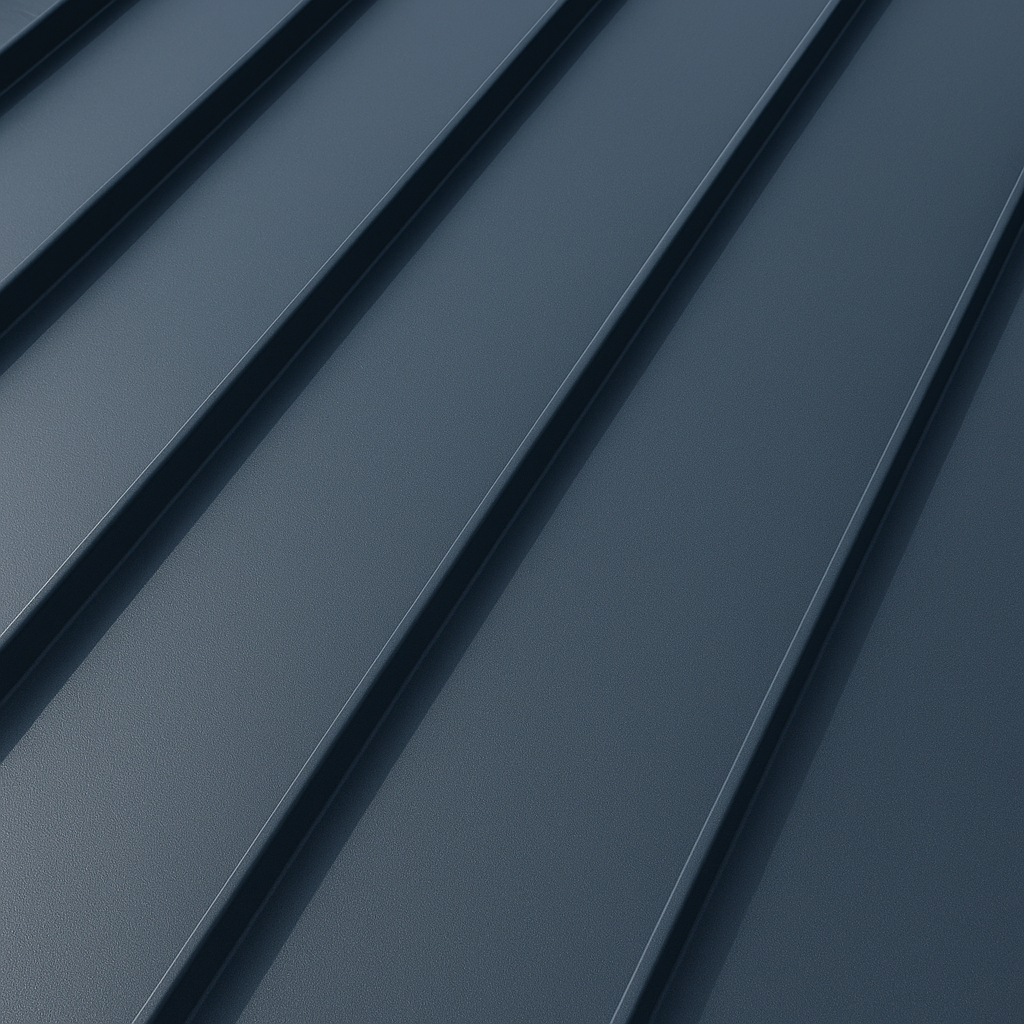
Standing Seam Profile
This profile is commonly referred to as Espan, Spanlok and Super Seam. This is a premium profile designed for both performance and aesthetics. Using a concealed clip system, the panels are secured without screws or nails penetrating the roof surface, ensuring a clean, watertight finish. Unlike exposed fastener roofing, there are no visible fixings, giving the roof a sleek and uninterrupted appearance.
Key Features
- Clean and smooth architectural seam lines.
- Concealed fixings for a smooth, modern appearance.
- Suitable for façades as well as roofs.
Typical installations
Residential
-
High-end homes, extensions, architectural cladding.
Commercial/Industrial
-
Office façades, retail stores, prestige projects.
Architectural
-
Decorative walls, feature roofing elements.
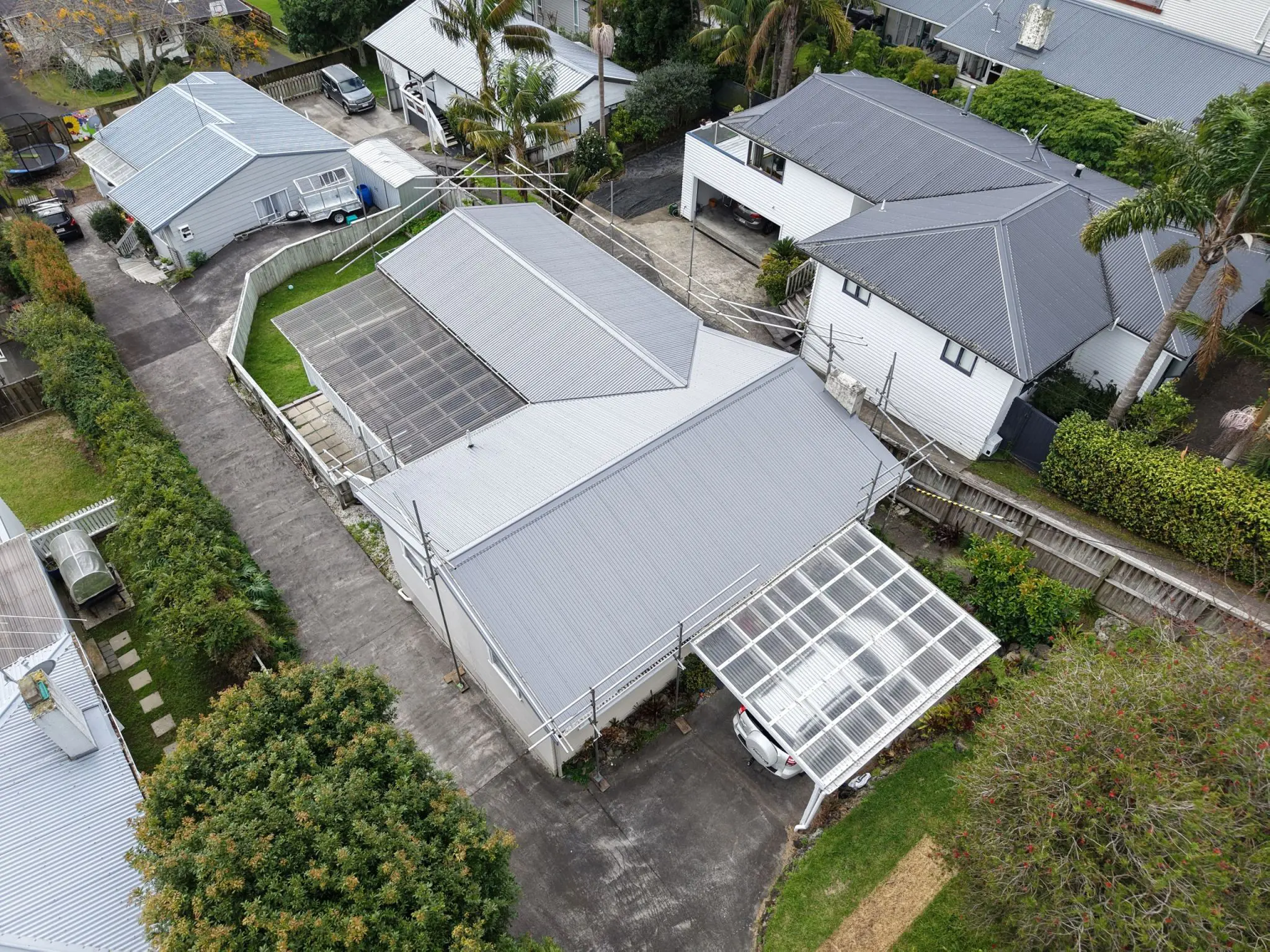
Spanlok Profile
A premium concealed-fix system (similar in concept to Klip-Lok) designed for long-span roofing with minimal visual interruption. Spanlok features wide pans and deep ribs that snap into concealed clips, delivering superior weatherproofing and expansion performance.
Key Features
- Fully concealed fixing system (no exposed screws).
- Wide spanning capacity with minimal purlin support.
- Excellent water tightness, even on very low-pitch roofs.
- Handles thermal expansion effectively.
- Clean, continuous architectural look.
Typical installations
Residential
-
Modern architectural homes, skillion and low-pitch roofs.
Commercial/Industrial
-
Shopping centres, warehouses, large public facilities.
Coastal Areas
-
Reduced risk of corrosion from exposed fasteners.
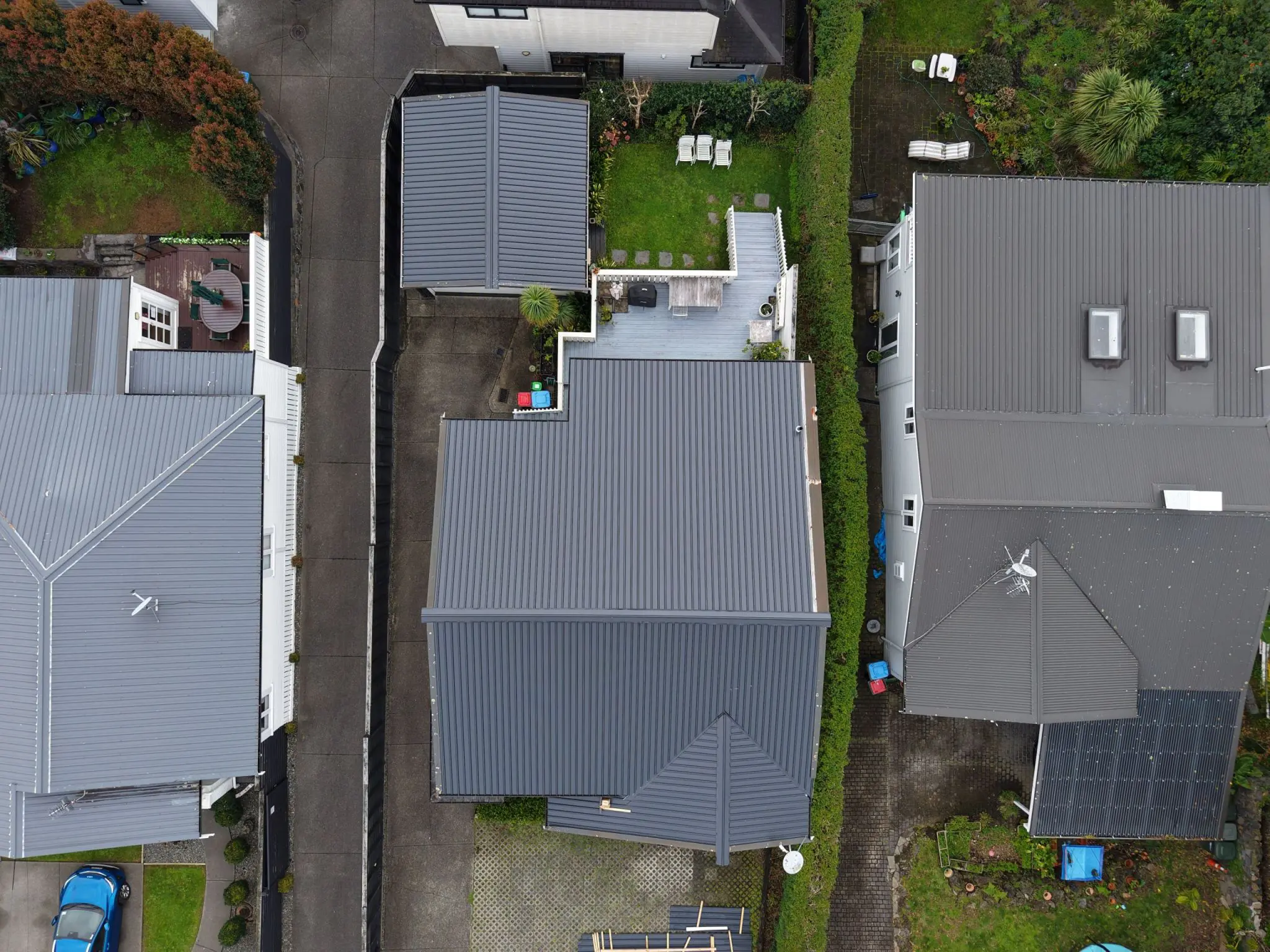
Roll Cap Profile
One of the oldest traditional roofing methods, roll cap uses a flat pan with raised timber battens, covered by a curved or folded “cap” strip. This system is valued for its heritage look and proven durability.
Key Features
- Distinctive raised cap between panels.
- Suits both traditional and heritage projects.
- Highly durable and time-tested.
- Effective water run-off is achieved when installed at an adequate pitch.
Typical installations
Residential
-
Villas, bungalows, heritage restorations.
Commercial/Industrial
-
Churches, schools, historical public buildings.
Architectural
-
Feature roofs requiring a traditional aesthetic.
Trusted Roofing Solutions
Choosing the Best Materials
Selecting the best option depends on several factors: your roof pitch, the style of your home, local weather conditions and your budget.
Each profile provides unique benefits in terms of strength, aesthetics and performance. At Solution Roofing, we take the time to understand your needs and guide you through the options, helping you choose the most suitable materials for your roof.
Architectural Style - Choosing the Right Look
Corrugated and trapezoidal profiles offer a classic, softer appearance, often preferred for residential homes, bungalows, or renovations where a traditional yet contemporary aesthetic is desired. They provide strong practicality and a familiar visual appeal. For those seeking a more streamlined, minimalist, or modern architectural statement, trough or standing seam profiles are an ideal alternative. Trough presents a strong, versatile option for a sleek look, suitable for both residential and commercial projects that lean towards a modern aesthetic.
Roof Pitch - Matching Profile to Slope
Excellent for very low-pitch roofs, trapezoidal profiles ensure effective water-shedding, making them a reliable choice for residential and light commercial projects with a gentle slope. Trough is also highly versatile and can accommodate a wide range of pitches, offering robust strength and superior drainage for modern residential and commercial architecture.
Finding the Right Fit
A profile's suitability often depends on project scale and style. Corrugated is typically the preferred choice for residential applications, offering a classic aesthetic and proven value for homes and renovations. For commercial projects, trapezoidal is a leader due to its wide spanning capability, which creates cost efficiencies on large buildings. Trough offers modern versatility, bridging the gap for architecturally-designed homes and stylish commercial properties that require a clean, strong profile.
Environmental Conditions - Weather & Coastal Considerations
In high rainfall areas, Trapezoidal and Spanlok profiles are preferred for their effective water-shedding, even at low pitches. In high wind zones, concealed-fix systems like Spanlok offer strong resistance thanks to secure clip designs, with Trough also suitable where spanning allows. Coastal areas benefit from systems without exposed screws, like Spanlok or Angle Seam, to minimise salt spray corrosion. In hail-prone regions, Corrugated and Trapezoidal Roofs are reliable due to their proven impact resistance.
Maintenance & Long-Term Performance
Maintenance needs vary by fixing system. Concealed fastener profiles like Spanlok and Angle Seam are preferred for low upkeep, with no exposed screws to check. Corrugated, Trapezoidal, and Trough, which use exposed fasteners, require regular inspections to keep fixings secure and watertight. Roll Cap is durable but usually needs more attention over time, as its timber battens and cap joints are more exposed to movement and weathering. Each profile’s design impacts long-term maintenance.
Structural Requirements - Spanning and Support
Spanlok and Trapezoidal are engineered with wide spanning capacity, making them cost-effective for large commercial roofs where minimising support steel is a priority. Trough also offers strong spanning ability and versatility, suitable for both residential and commercial applications. Corrugated, Roll Cap, and Angle Seam typically require closer purlin spacing, but they’re often chosen for projects where visual appeal, architectural style, and detailed finishing are key design considerations over structural efficiency.
FAQs
Still deciding which option is right for your property? Below are some common questions our clients ask when choosing between corrugated, trapezoidal, and standing seam options.
Which profile is best for low-pitch roofs?
Trapezoidal and tray (standing seam) profiles are ideal for low-pitch roofs due to their strong drainage capability and weather resistance. Our team will assess your roof pitch and recommend the best option for long-term performance.
What’s the difference between corrugated and trapezoidal roofing?
Corrugated roofing has a classic wavy shape and is cost-effective for traditional homes and rural buildings. Trapezoidal roofing offers a modern, angular look with stronger spanning ability, making it a great choice for low-pitch or large-scale applications.
Are concealed fastener systems worth the extra cost?
A: Yes, if you’re after a sleek finish and low maintenance. Trough or standing seam profiles hide all fasteners, reducing the risk of leaks and corrosion. They’re especially suited for architectural homes or buildings in coastal environments.
How do I decide which roofing profile is right for my project?
A: The best roofing profile depends on your roof pitch, the style of your home or building, your budget, and local conditions. Corrugated is a great fit for traditional villas or rural settings, while Trapezoidal and Trough are often used on modern and industrial buildings. For low-pitch roofs or coastal properties, concealed-fix systems like Trough are ideal, offering excellent water tightness and minimal maintenance. Standing Seam is typically chosen for its crisp architectural lines and works best on walls or steeper roofs where water tightness is less critical. A roofing specialist can help you weigh up these factors and recommend the right profile for long-term performance.
Which roofing profile needs the least maintenance?
All roofs have similar requirements. Choosing the specific profile for your needs and environment is key. With no exposed screws, there’s less chance of leaks or loose fixings over time. Corrugated and Roll Cap are highly durable choices, but because they rely on exposed fasteners or timber battens, they usually need more regular inspections to keep them performing at their best.
What roofing profile is best for coastal properties?
Coastal homes face unique challenges with salt spray and wind. Concealed-fix systems, such as Spanlok or Angle Seam, are best suited for these environments, as they eliminate exposed screws and significantly reduce the risk of corrosion. Corrugated and Trapezoidal profiles can still be used successfully in coastal areas, but only if marine-grade materials and coatings are specified and if the roof is maintained more frequently.
Can metal roofing profiles be used for wall cladding?
Yes. Many metal roofing profiles are also designed for use as wall cladding, which can significantly transform the look of a building. Trapezoidal, Trough, and Standing Seam are especially popular, creating a modern, architectural finish while providing the same durability and weather protection as roofing applications. Using the same profile across both roof and walls is also a simple way to achieve a seamless, contemporary design.
What is the most cost-effective roofing profile in New Zealand?
Corrugated roofing remains one of the most affordable profiles and is widely used on homes, farm buildings, and sheds. Trapezoidal is also a very cost-effective option, particularly for larger structures, because its strong ribs can span further and reduce the need for extra purlins. Both profiles balance cost with proven strength and durability, making them reliable options for projects where budget is a key factor.
Reach out to us today for guidance on the right profile for your roof
What Our Clients Are Saying
We believe the best measure of our work is what our clients have to say. Here’s how some describe their experience with Solution Roofing:
Our Trusted Partners
We’re proud to team up with New Zealand’s most trusted and reputable businesses to deliver high-quality results on each project. These are our key partners and suppliers:
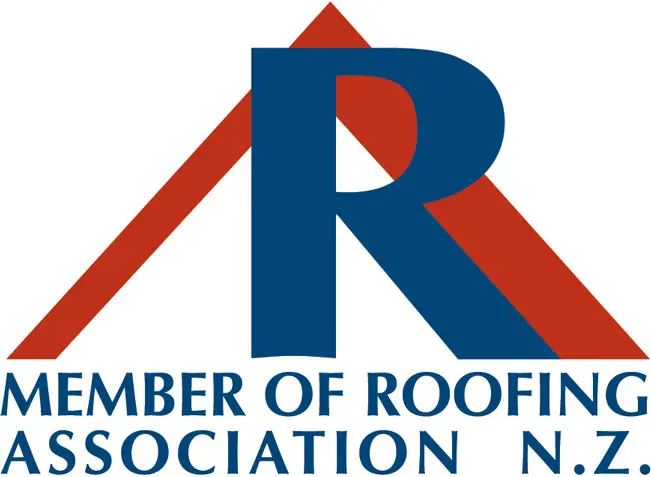
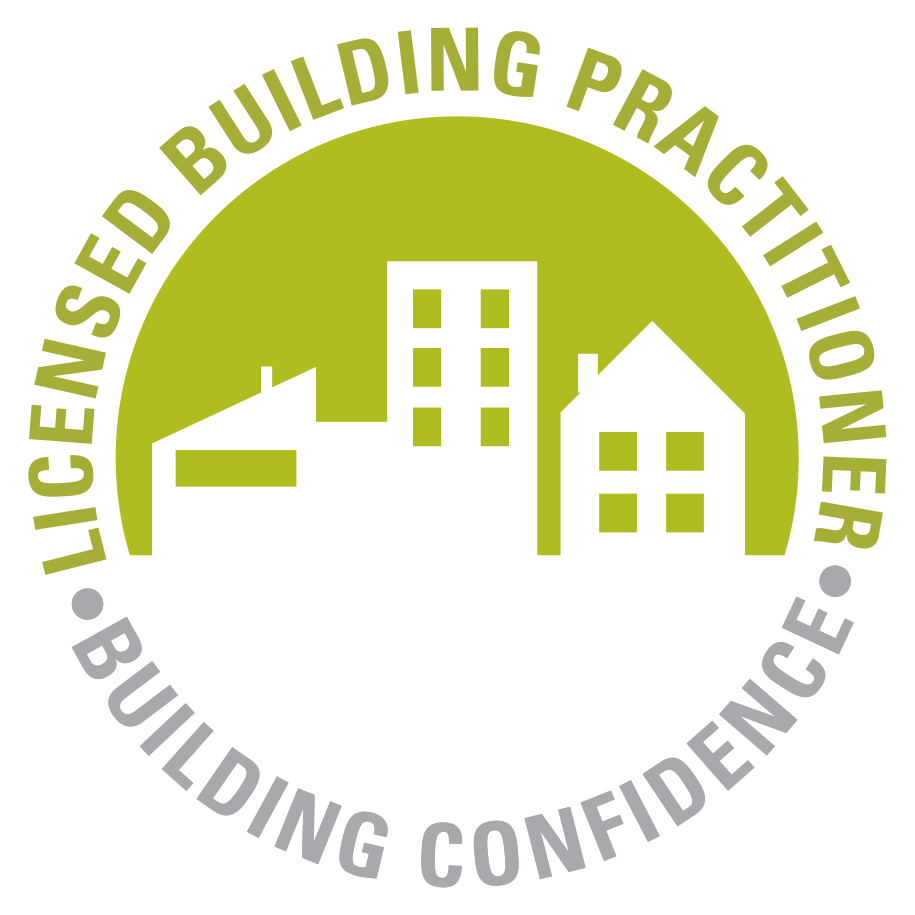
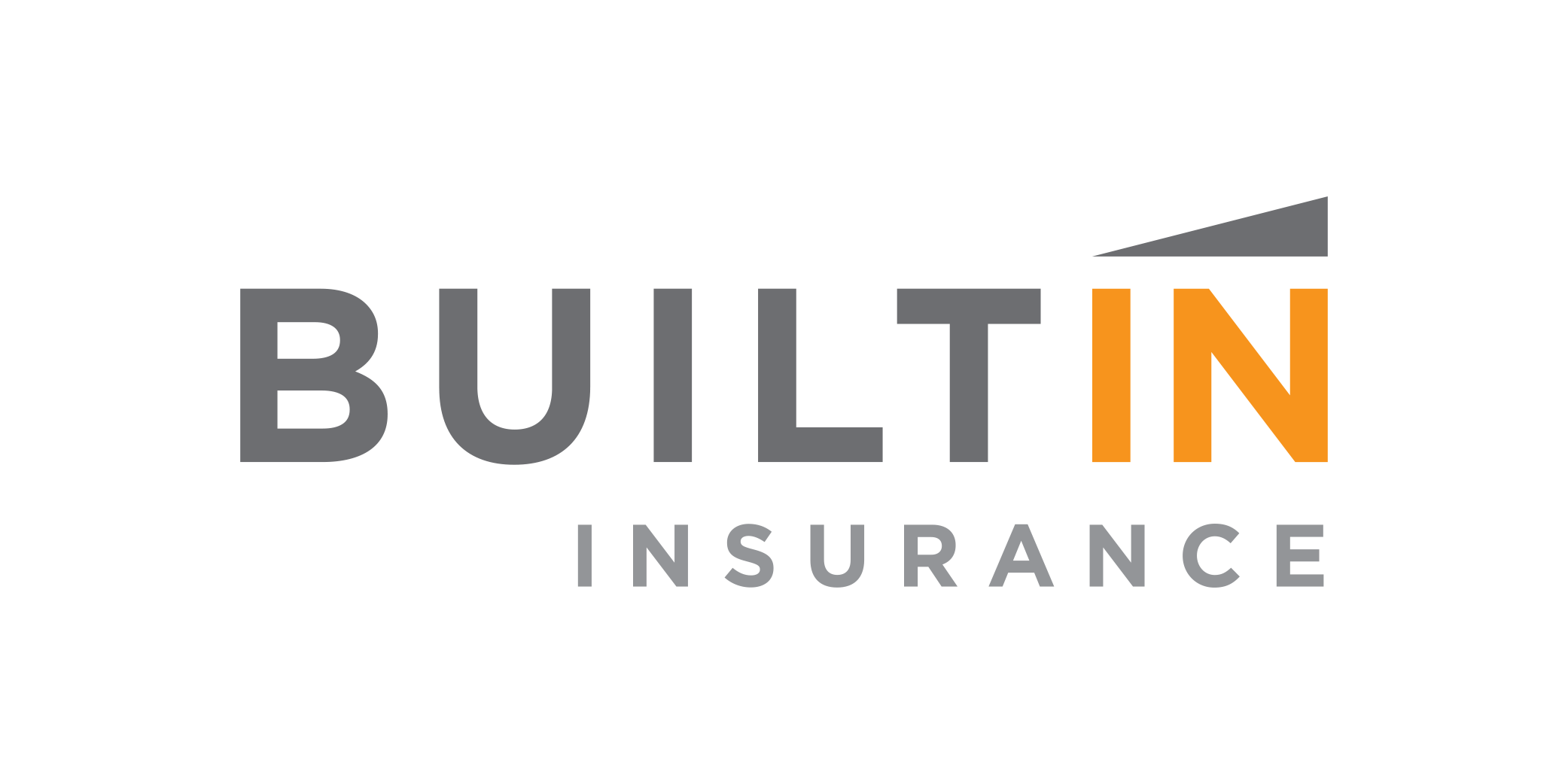
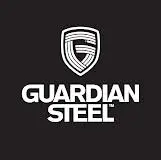
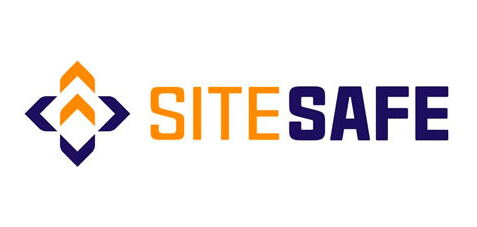
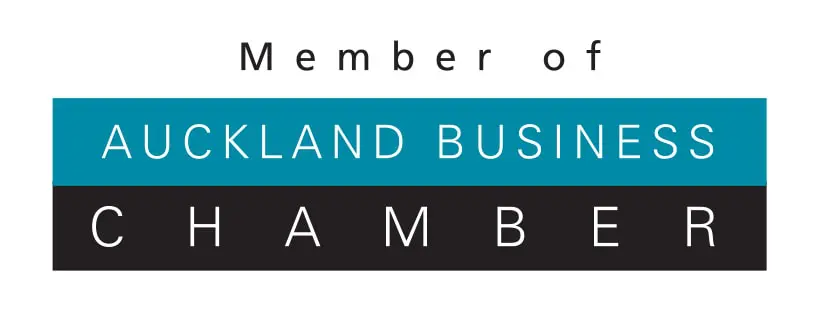
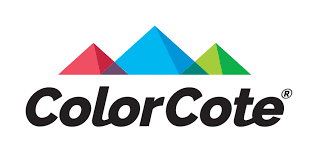
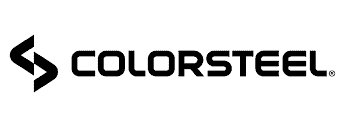
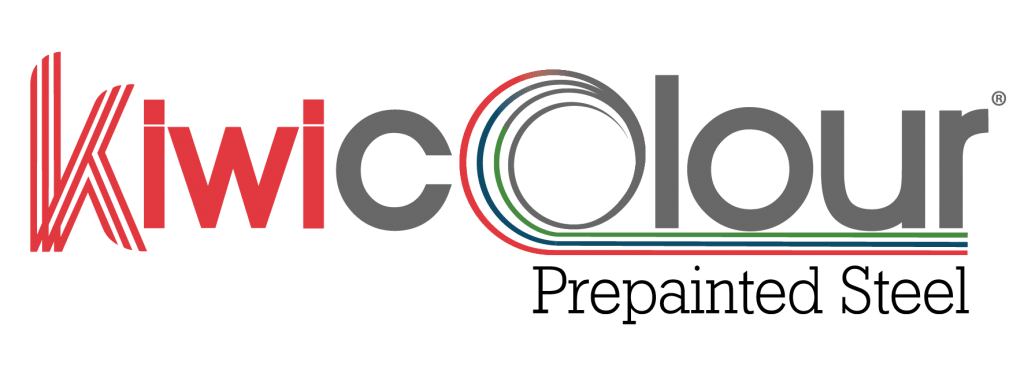

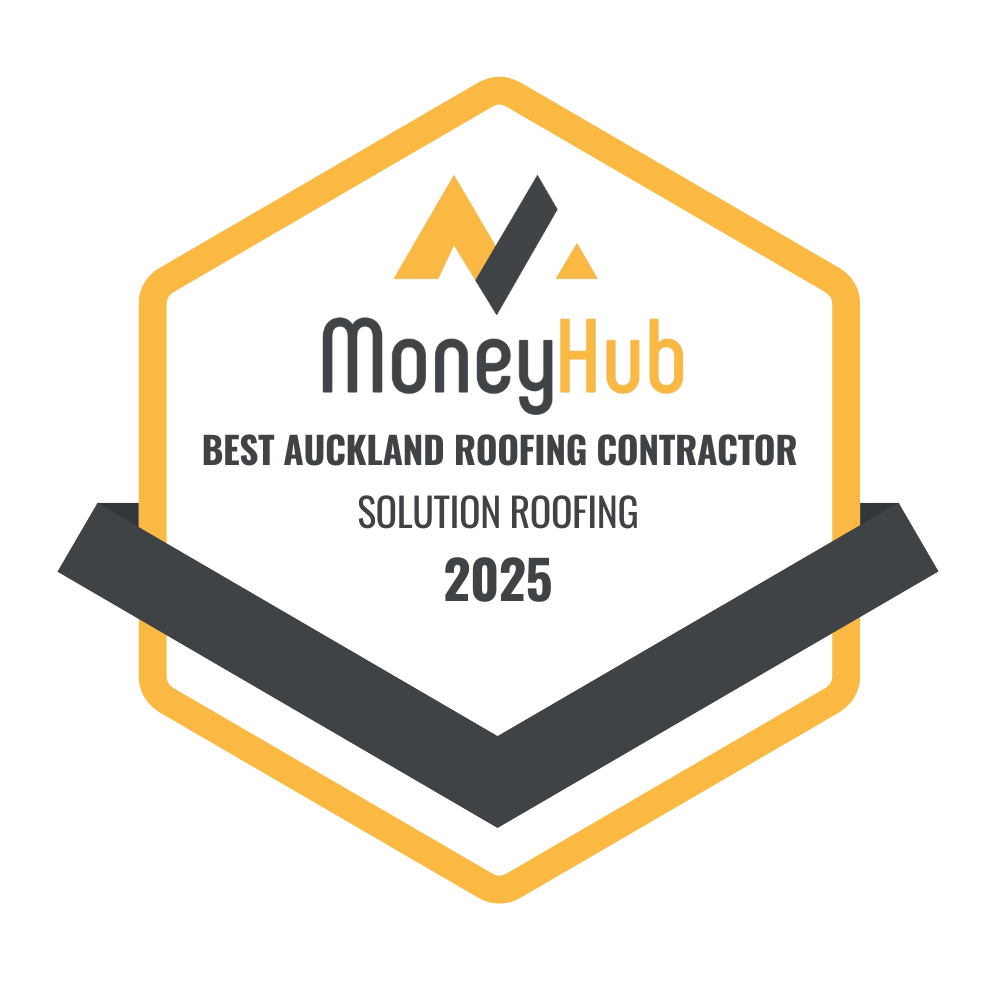

Ready to Transform Your Roof? Let's Talk
Please fill out the form below, and Our average response time is 3 business hours.
